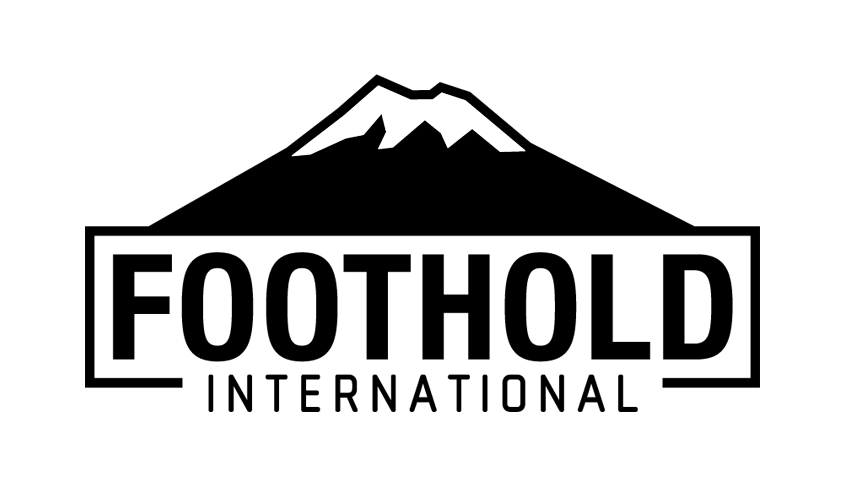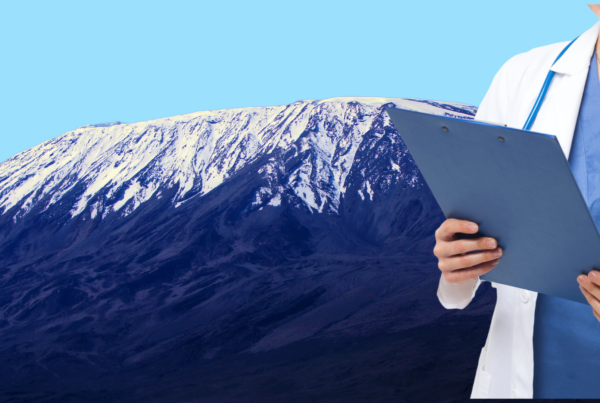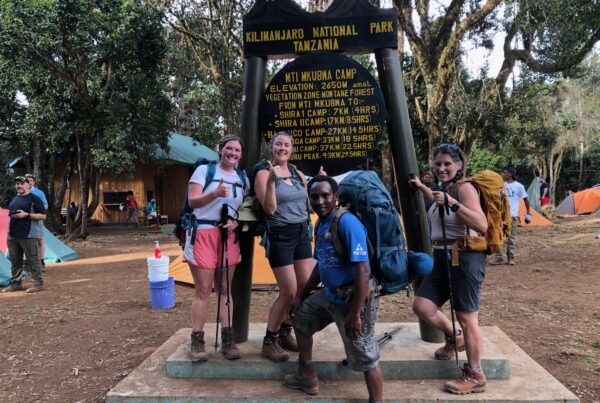
This is the packing list I wanted when I was preparing to climb Kilimanjaro. I read blogs, watched Youtube videos, visited REI and Sierra at least 50 times, and read their packing recommendations. I’m not quite an expert yet, but I do know pretty well what worked for me and the rest of our group. So, I hope this helps you and saves you a little time.
You will have 2 bags on your hike:
1. A Duffel (70-100 L)
2. Day Backpack (30-50 L)
- Each day, your porter will carry your duffel. You will pack all the things that are not needed during the day’s hike (this includes your sleeping bag, clothes, toiletries, etc). Porters will setup camp before we arrive & have your duffel waiting in your tent each evening.Keep your duffel at below 33 pounds/15kg.
- Your dayback is a lightweight hiking backpack used just for the essentials you will need while you hike: water, snacks, extra layer, camera, etc.
When preparing for your flight, you will check your duffel bag and carry-on your day backpack. You also MUST wear your hiking boots on the flight to guarantee your boots do not get lost.
In rare occasions, checked luggage can be lost. You can rent replacement equipment in Moshi if that happens, but you DO NOT want to rent boots, nor do you want to rent a day backpack. The items for rent are appropriate, but you would be lucky to find items that fit you.
Your guides will inspect your gear the night before the climb and gather any equipment that we may be lacking.
Overall Packing List:
- Waterproof leather boots $130-200+
- Day Backpack (30-40L with hydration bladder)
- Hydration bladder
- Sleeping Bag 0 to-20 Degrees F
- Duffel 80-100L (waterproof/water resistant)
- Trekking poles
- Headlamp
- Socks 8-12 pair (wool recommended)
- Fleece jacket
- Insulated down jacket (synthetic NOT recommended)
- Face covering or Balaclava
- Outer Shell Jacket water/windproof
- Rain pants
- Snow/ski pants (water resistant & fleece lined)
- Lightweight Gloves
- Winter gloves or mittens (waterproof)
- Sunglasses
- Base Layers (2-3 wool or silk recommended)
- Altitude prevention medication (talk with your doctor)
- Hat for blocking sun
- Winter toboggan for summit night
- 1-3 hiking pants
- 1-3 Shirts
- 1-2 lightweight t-shirts
- 8+ underwear
- Camp shoes
- Extra water bottle
- Personal wipes
- Protein bars, granola bars, or trail mix
- Basic toiletries
- Travel pillow
- Passport
- Visa Application Approval Form
- Covid Travel Form (if required)
- Covid Test Card
- Yellow CDC card
Cherie’s Recommendations
- Waterproof leather hiking boots
- This the most important gear you will buy. I bought my boots at a local shoe shop and paid more than I wanted to at the time, but I was so grateful on the climb that I didn’t skimp on this.
- Things to consider:
- Leather or Gortex?
- Gortex is lighter, cheaper, more comfortable on first wear, and they look much cooler than leather, but…this is a big one, they’re just not as durable. They are ready to go without much break-in, but I’ve read too many stories of climbers with gortex boots wearing holes or having separation from the soles on the climb…this could be devastating. You want to break in your shoes, but unfortunately gortex has a tendency to break down during break-in period.
- Leather is heavier and takes more time to break in, but they are more reliable and with proper leather care can last for years.
- Other considerations—you want a hefty tread and good toe protection.
- It’s recommended that you break them in with 30+ miles of hiking before the climb.
- Leather or Gortex?
- Day Backpack
- 30-40L with water bladder capability
- Another item worth trekking to REI to purchase. Let them know this is not a full-on backpackers backpack you’re looking for. The size you’re looking for is often for day hikers and even rock climbers.
- Make sure to get a rain jacket for your backpack. A lot of models include one, but if not, they cost $15-30.
- You will NOT be carrying your food, backpack, tents, etc, so, you only need one that can carry a couple layers of clothes and has capability of adding a water bladder
- My husband bought an Osprey (which of course is the hiker’s brand), but I liked the REI Co-op brand better for myself.
- Osprey backpacks need to be fitted on you. Again, REI sales reps will help measure you and size you. It is important to be measured and know what size you need. Some backpacks, like mine aren’t adjustable, so you have to just make sure you buy the right size for your torso length.
- Hydration Bladder
- Osprey has the best warranty, and the sales reps will definitely try to push these, and they’re worth it if you’re going to use them long after the climb for other hikes.
- But the generic brand bladders also performed just as well as the name brand bladders did on the hike.
- Sleeping Bag 0 to-20 Degrees F
- Keep in mind degree ratings are determined arbitrarily by the manufacturer, so take these ratings with a grain of salt.
- Watch for ratings that may be in Celsius instead of Fahrenheit.
- Consider the down rating and the style. You can get by with a 0 Degrees F sleeping bag if the down rating is at least:
- 650FP Duck Down
- The one I bought from Amazon was 0 degrees and worked fine. The price has gone up a bit since I bought it. I also have a Marmot that I bought used that I like even better. What I like about this one on Amazon is that you can order small, medium, large to tailor to your height. For reference, I’m 5’ 6”, and I bought a size small.
- Mummy-style with drawstrings for the face and neck collar is essential. Look for extra padding or a “shelf” around the neck to provide extra warmth, and if the neck shelf includes another drawstring, this also helps keep you warm.
- Feet area—look for a bag with a little extra padding in the feet as your feet can get cold at night. This isn’t the biggest issue, but it can help you be more comfortable.
- Pay attention to the zipper. My lovely Marmot sleeping bag has a good zipper, but it sometimes gets a little stuck. The cheaper one I got on Amazon zips & unzips much easier.
- Duffel
- 80-100L (waterproof or water resistant)
- Eagle Creek, Thule, North Face and a few other brands make nice ones. The Eagle Creek 90L I found to be the most reasonably priced. I was cautious of the REI brand duffels. They had bad reviews for water resistance.
- North Face was the nicest & most expensive of the duffels I saw.
- FYI–No bag is going to be 100% waterproof even though they may be made of “waterproof materials,” the seams and zippers are always to going have some vulnerability, but it’s not a huge deal because the porters carry your duffel inside another canvas bag, so you have pretty good water protection.
- Trekking poles
- I bought a $20 pair from Sierra. It worked fine, but I wished I had better quality material on the handles for comfort, plus the cheap foam made my hands look dirty the whole time.
- Cork is much more comfortable, but there are some with high quality foam that would also be comfortable…it’s up to your preference.
- Double handle is helpful—many times myself and the other climbers found that they had to grab the poles below the handle suddenly during steep descents. There are poles designed with a “second foam handle” for this, and I do recommend that feature for comfort.
- Since the climb, I bought a Black Diamond that I paid $140 at REI, and I’m really happy with that purchase.
- Black Diamond and Leki brands are good quality
- Carbon fiber or Aluminum?
- Carbon fiber is lighter, but aluminum is more durable.
- This is my pole I bought after the climb:
- These are the carbon fiber ones my husband bought:
I recently fell during a hike in Colorado, slightly bending the aluminum pole, but it didn’t break, so I was able to finish my hike with it slightly bent. Had it been a carbon fiber, it would have just broke. Since I bought it at REI just about 4 months ago, I took it back to them and they gave me a new pair, no questions asked (as an REI member).
- Headlamp
- Buy a cheap one. Bring a couple extra batteries. Don’t sweat this one.
- Socks 8-12 pair (wool recommended)
- I am a huge advocate for wool socks. Whenever I wore cotton socks, I found my feet got sweaty and they tended to get really cold. On summit night, you will wear 2 pair of socks: one will be a liner-type of sock (again I recommend this being wool), and a thicker longer, boot sock over top.
- Sierra sells these cheap when they have them. If you wait to the last minute, they can be expensive.
- Extra socks don’t take up much room, but they can be a life saver if your socks get wet or sweaty.
- Darn Tough is a favorite brand among hikers & backpackers with good reason. They are amazingly comfortable, durable & come in great colors & designs. You can find these year-round on Amazon, REI, Sierra…
- Snow pants
- You want 1 pair of water resistant, fleece lined pants for summit night. Eddie Bauer has the best price I’ve found on these. You may find them online.
- Fleece jacket
- You need a fleece layer which can be a jacket, hoodie or vest.
- Insulated jacket (down highly recommended)
- Down is amazing!
- Those who wore a big synthetic down jacket were very cold on summit night.
- Lightweight packable down jackets may not be enough, so be ware. I originally had an Eddie Bauer packable down, but when I tested it out on Ohio winter hikes, it did not keep me warm. I needed something with a hood and a little more coverage in the back.
- I found a used REI down that was beefier than my Eddie Bauer with a hood and nice bungee drawstring on the bottom to hold in body heat better. Still considered a packable jacket, it came with a compression bag, but it did not pack down quite as small as the lighter one. The space was worth keeping me warm on summit night.
- Face covering or Balaclava
- Take time to figure out which style works for you. Some face masks make you feel like you’re suffocating and can cause problems for you in high altitudes.
- My husband has a nice wool neck gaiter that gives you room to breathe, but for others, a balaclava or ski mask works for them.
- Take time to figure out which style works for you. Some face masks make you feel like you’re suffocating and can cause problems for you in high altitudes.
- Outer Shell Jacket water/windproof
- Eddie Bauer sells a nice affordable storm jacket that worked wonderful for the climb.
- This layer is supposed to be used just in case of rain, so you want it to be as water resistant as possible but remember that no jacket is ever completely waterproof.
- My Eddie Bauer storm jacket was also very comfortable at higher elevation camps where the wind was obnoxious.
- Buy one that is roomy enough for all the layers. On summit night, you will wear it over several layers.
- Rain pants
- These are for “just in case of” rain, so buy a cheap, but light waterproof pair. You’re likely to only use them if it rains/snows on summit night. None of us used ours, but we carried it on summit night just in case.
- Lightweight Gloves
- These are your thin glove liners you would use on several days on the mountain. During summit night, you will wear snow gloves over these, so you want to make sure they will fit under your pair of warmer gloves or mittens.
- I got a pair of silk glove liners on Amazon that I really love. They work wonderful, but not so durable.
- Winter gloves or mittens
- Thermal gloves or mittens to wear on summit night over your lightweight gloves.
- Water resistant snow gloves are recommended.
- Sunglasses
- Safety glasses could be a good idea for summit night, but not essential
- Regular, comfortable sunglasses are fine. Don’t stress on this one either. Where what you like.
- Base Layers (2-3 wool or silk recommended)
- The youtube video is a great tutorial on choosing base layers. They can be pricey, so keeping an eye on Sierra’s website can help you save money
- You will wear 2 pair on summit night, and you will wear those same clothes for 2 days without changing! So it’s recommended to set aside 2 pair of base layer pants for summit night & 1 pair of base layer top and only wear them on those days.
- Base layers are also great for keeping you warm inside your sleeping bag, but I actually got too warm on most nights, so I was glad I brought along some lighter weight sleeping pants on most nights.
- Altitude prevention medication (talk with your doctor)
- Hat for blocking sun
- Wear what you like
- Winter toboggan for summit night
- No need if you have a balaclava or ski mask
- 1-3 hiking pants
- Zip-off pants are really convenient. You can get by with one pair of these if you have to
- Pants that stretch a little are helpful
- Look for fabrics that are lightweight and water wicking
- 1-3 Shirts
- Hiking/fishing shirts are great, especially if the long sleeves can roll up to short sleeve.
- Shirts that have SPF protection are a plus but not essential
- 1-2 lightweight t-shirts
- Short sleeve or sleeveless
- It’s nice to wear these under your long sleeve shirt and/or at night
- 8+ underwear
- A couple extra pair of underwear doesn’t take up much room in your duffel, so why not?
- Since you’re not showering the whole climb, extra underwear are a nice thing to change out.
- Camp shoes:
- You can bring hiking sandals (Like Chacos or Tevas), but I recommend bringing instead, a pair of comfy running or trail shoes.
- I switched out my hiking boots for my trail running shoes on the very last day of descent, and it was lovely as heavy hiking boots aren’t so comfortable on the steep descent.
- A pair of thin slides or flip flops may be helpful (if you have room) when going in and out of your tent.
- Extra water bottle
- Personal wipes
- Protein bars, granola bars, or trail mix
- Just bring a few. There will be plenty of hot food served at camp, so these snacks are only needed for breaks in between meals.
- Basic toiletries:
- Wash cloth
- Face wipes/ hand towel
- Toothpaste
- Toothbrush
- Deodorant
- Sunscreen
- Bug spray
- Small travel soaps provided daily
- Travel pillow
- Passport
- Visa Application Approval Form
- Covid Travel Form (if required)
- Covid Test Card
- Yellow CDC card
Other Optional Considerations:
- Contacts (if you wear them)—consider bringing dailys. It can be very hard to get your hands clean enough let alone keep your contact case clean especially at Shira camp.
- Nasal moisturizing gel—the air is tough and can be very dry. It’s the thing I most I wished I brought with me.
- Hydration powder
- I really liked Liquid IV. I felt it really helped with altitude symptoms. I used one packet daily.
- Other sports drink powders are helpful if you like them. For some people they can cause heartburn, so make sure you try out any before the trip to make sure you can tolerate them.
- Cough drops
- Again, the strong winds and altitude can really dry your sinuses. Cough drops were so very soothing.
- Battery pack & cables
- If you want to keep phone or camera charged for the climb.
- Solar Panel
- Do NOT waste your money on solar battery packs. They are a gimmick and are a waste of weight in your bag. They are heavy and absolutely useless except that they are a battery pack only.
- Amazon sells lightweight solar panels for hiking & camping that easily attach to your packpack. You can plug any separate battery to this panel. I can send you link to the one I bought if you like.
- https://www.amazon.com/gp/product/B017GQ7OEA/ref=ppx_yo_dt_b_search_asin_title?ie=UTF8&psc=1
- TSA travel locks for your bags
- Water filter or chlorine tabs
- Water will be gathered from mountain spring-fed springs that are very clean. As a precaution, the cooking crew will also boil the water, but you may bring a personal filter if want to be extra safe.
- Flip flops or slides
- Leg gaiters
- This is a personal preference. If we were climbing during rainy season, I would say they are recommended but…it’s not likely that they will be needed. However, it does help keep dust out of your boots, so I personally would recommend lightweight ones for Kilimanjaro.
- Now if you’re hiking in Colorado in the snow, buy a pair of heavier leg gaiters. Snow is always possible, so if you want to have extra protection from getting snow or dust in your boots, bring them.
- Lightweight sleeping pants
- Cotton is great since most nights it isn’t freezing temps, you may actually get sweaty at night if you wear fleece or wool pants.
- However, wool base layer pants to sleep in at base camp would be helpful since it gets below freezing.
Things NOT necessary to bring:
- Sleeping pad (one will be provided), but if you need extra padding, feel free to bring your own for extra comfort, but you won’t need it to protect you from the cold ground. The sleeping pads provided are ample for that purpose.
- Spikes or Crampons
- Snow baskets for your trekking poles.
- Ice picks
- Rock climbing gear
- Toilet paper (the porters provide plenty!)
Follow Alice has a great packing video guide. https://youtu.be/XPKGf7MPWzk
Small things I wish I had brought!
- Book to read
- Flip flops
- Saline gel for sinus
- Melatonin
- Aloe vera gel for sunburns
- Playing cards
- $20-30




One Comment